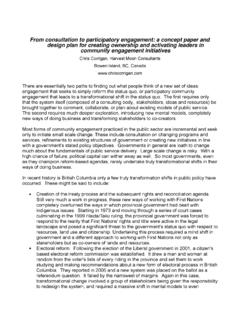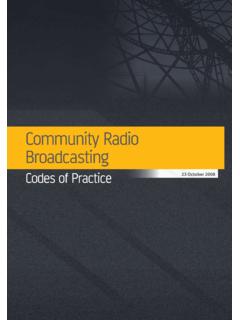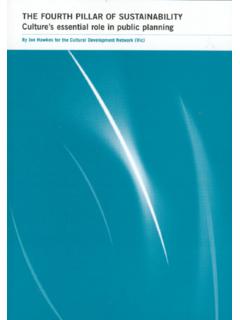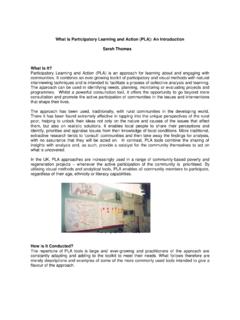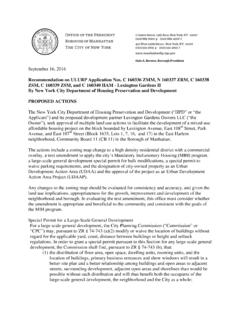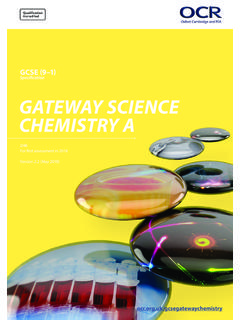Transcription of Induction activities exploring the community, …
1 Copyright active Citizens FE 2011 Induction activities exploring the community , learner voice and opportunities to get involved Staff notes Tutors and teachers working with young people aged 16-19 are often looking for activities to use during Induction . activities which support the needs of new learners , reinforce the ethos and values of the organisation, introduce them to learner voice and make them aware of new opportunities for involvement available to them. These materials focus on the issue of the community as presented by the college, training provider or other type of organisation that a learner is now part of and comprise a general activity about what community is and why it is important to get involved.
2 This is followed by an activity introducing learner voice. Learning and skills providers are required to have learner involvement strategies in place which set out all the ways in which learners views and opinions are gathered and used to shape learning provision and wider decision making in the organisation. Post-16 citizenship learning is an important educational priority and supports learners to understand what it means to be an effective citizen and how they might contribute and make a positive difference to the communities they belong to.
3 You may like to use these activities as part of other work introducing the learner contract, the organisational charter and the equal opportunities and behaviour policy etc. It may also be useful to establish a contract for the group and agreed ways of working as part of this. Ideas for follow-up activities and resources are given at the end The first activity involves a discussion around what a community is, what makes a successful, cohesive community and what can be done by all of us when we see things that we dislike about the community of the college or provider.
4 The second activity introduces learner voice and the benefits for the learners of getting involved. Through a discussion carousel, it allows them to identify which structures can be used to solve different issues. Copyright active Citizens FE 2011 Activity 1 Our community : Get involved and make a difference! Background, organisation and resources Many students will be new to the organisation, may not know other people and could feel a bit overwhelmed by the size of the organisation and some of the new freedoms and responsibilities it offers.
5 This activity raises for discussion the factors that help to build a sense of community ; in this case the focus should be on the community of the organisation. It will encourage learners to understand the actions, behaviours and attitudes needed by all to make it a positive community ; one in which they will thrive and be successful. It also allows opportunities to express any concerns and explore what they might do to improve or eradicate problems. This activity is a platform for introducing citizenship learning and social action and for outlining citizenship activity and projects that learners might get involved in.
6 The activities require two different colours of post it notes, flip chart paper or a white board. The room should be organised so the learners can work in small groups A community is a group of people who feel they all have certain things in common and that they belong to the group. The things they have in common might be beliefs, work, area, values, cultural background, social activities , school, college, etc. A cohesive community is a place where the people who live/work there get on together and share a common vision for the place, even though they may have different backgrounds, interests and needs.
7 (Adapted from Moving forward together: citizenship learning for community cohesion. LSIS 2009. See Aims of the activity The activity enables young people to: Introduce the concept of community Identify the various groups in their community Understand the number of communities that they belong to Explore issues that are of concern to them in the provider or local area. Debate what factors are needed in order to make communities happy and friendly places to be part of Copyright active Citizens FE 2011 Running the activity Stage 1 Ask participants to work in small groups of 3 or 4 to consider the following questions: Which communities do you belong to?)
8 (Could be family, neighbourhood, faith group, tutor group, class, work, clubs, football teams, other interest/social community can be a small group of people, like a family or a large group like all the women in the world.) What makes a community ? What do they have in common? What factors are important to create a sense of community ? Do you think belonging to a community is important? How does it make you feel if you are part of a group or not part of a group? On the basis of these discussions, ask the group to come up with a definition of the term community .
9 (See background section above for one to use). Stage 2 The tutor should now explain that the college/training provider is a community which each learner belongs to. Using a large piece of flip chart paper (or a white board) draw a circle and ask everyone to record on individual post-it notes ( one colour), what they like about being at college etc. Use up to 5 post-its and place them inside the circle. ( Facilities, chance to have new friends, range of courses, support offered, way they are treated as adults). Once they have done this invite them to record on individual post-its (up to 5 on a second colour), things they do not like (or would not like to see) about the college/the training provider or the surrounding local area.
10 These can be things in the classroom or more widely across the college or in its immediate environs. ( swearing, messing about in class, lateness and poor attendance, littering, graffiti, vandalism, overcrowding, racism, poor behaviour on buses or trains etc.). Ask them to place the post- its outside the circle. Note: Flip cameras could be used in this activity to take photos around the college to record visually things that are liked and disliked. A photomontage can then be made Group the likes and dislikes and discuss with the group their experience so far.
